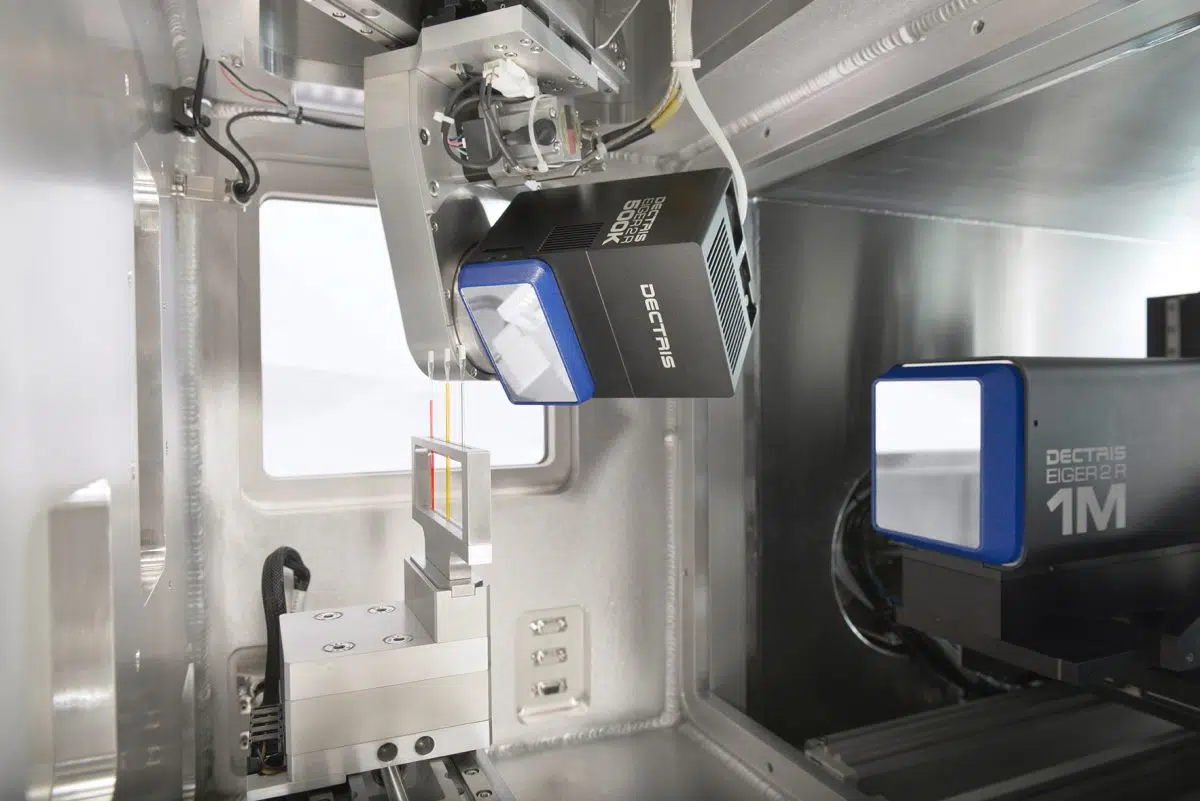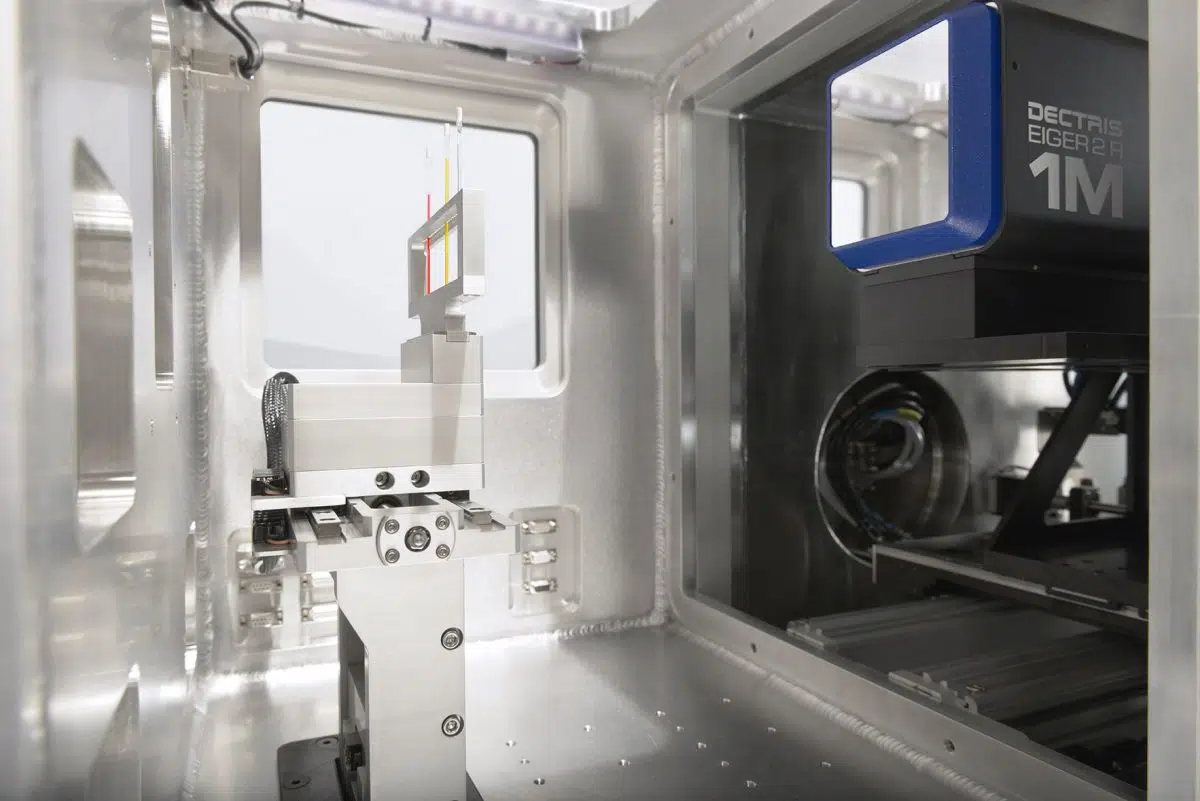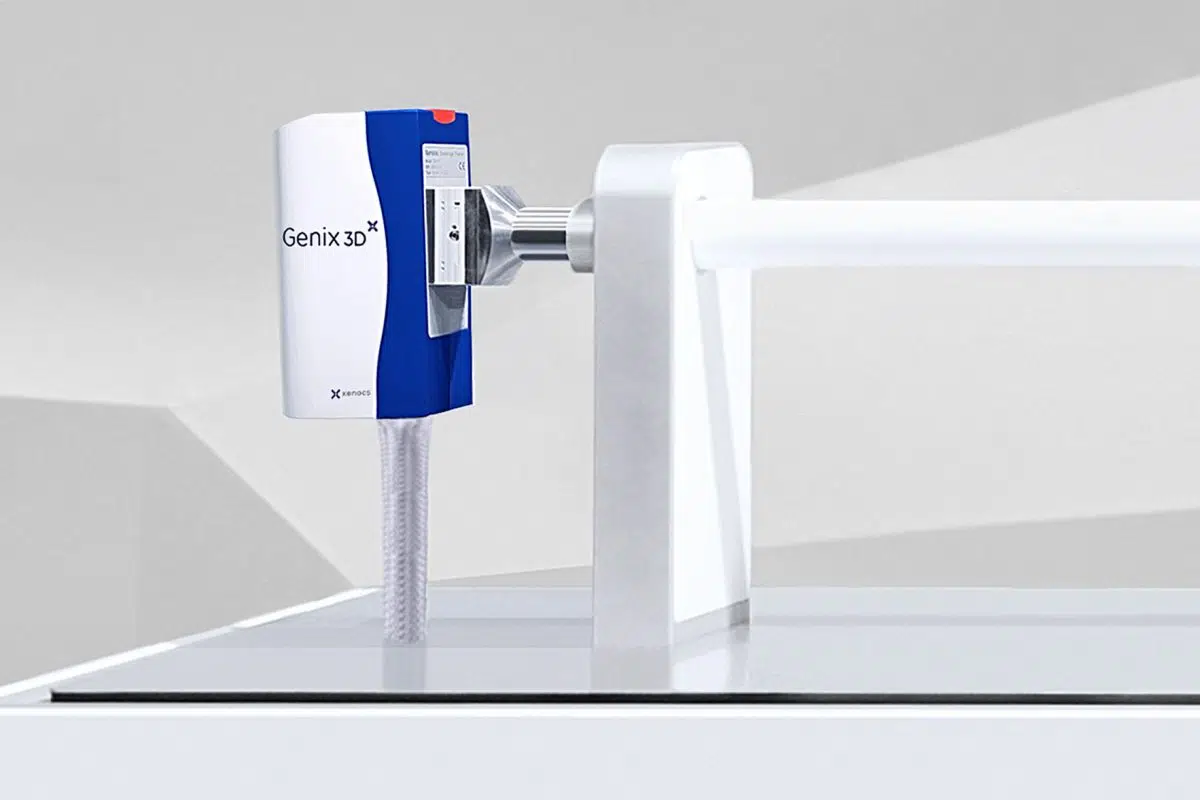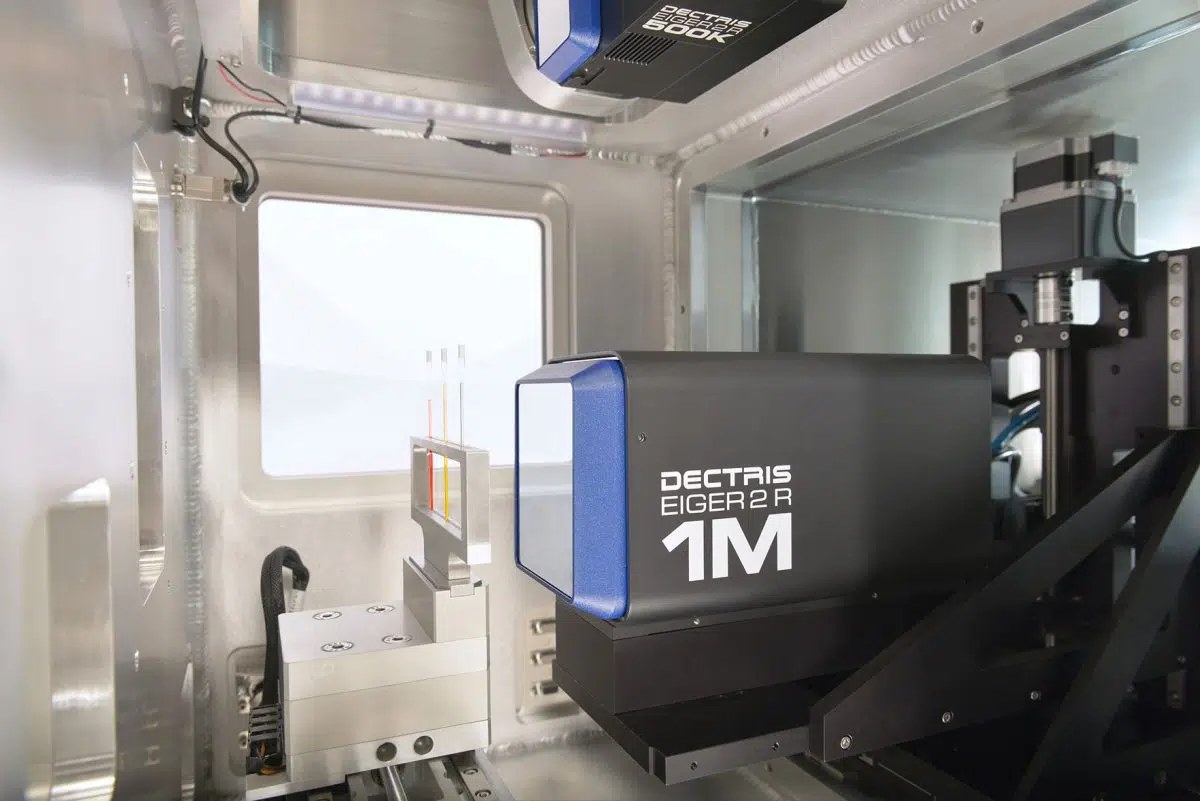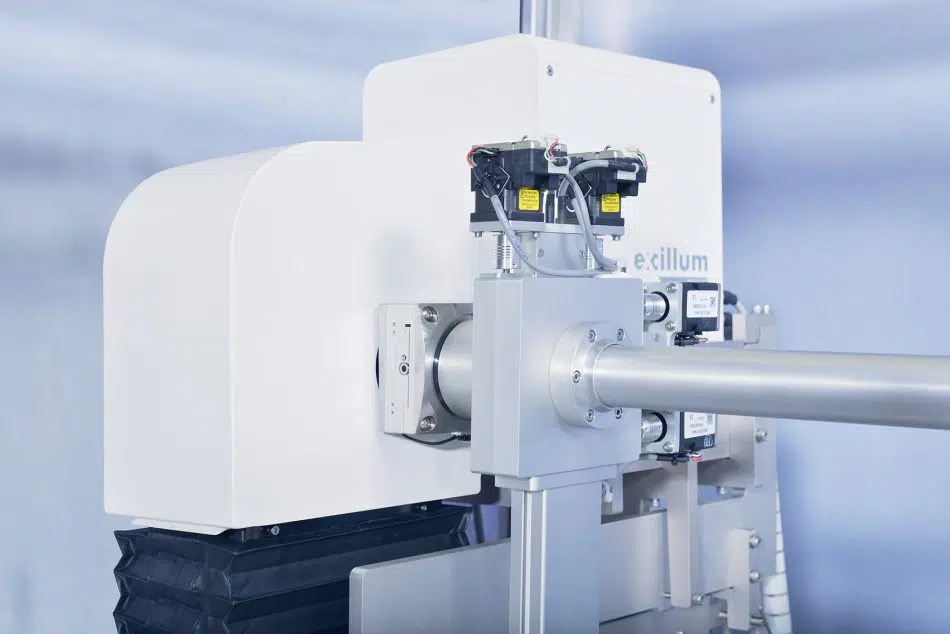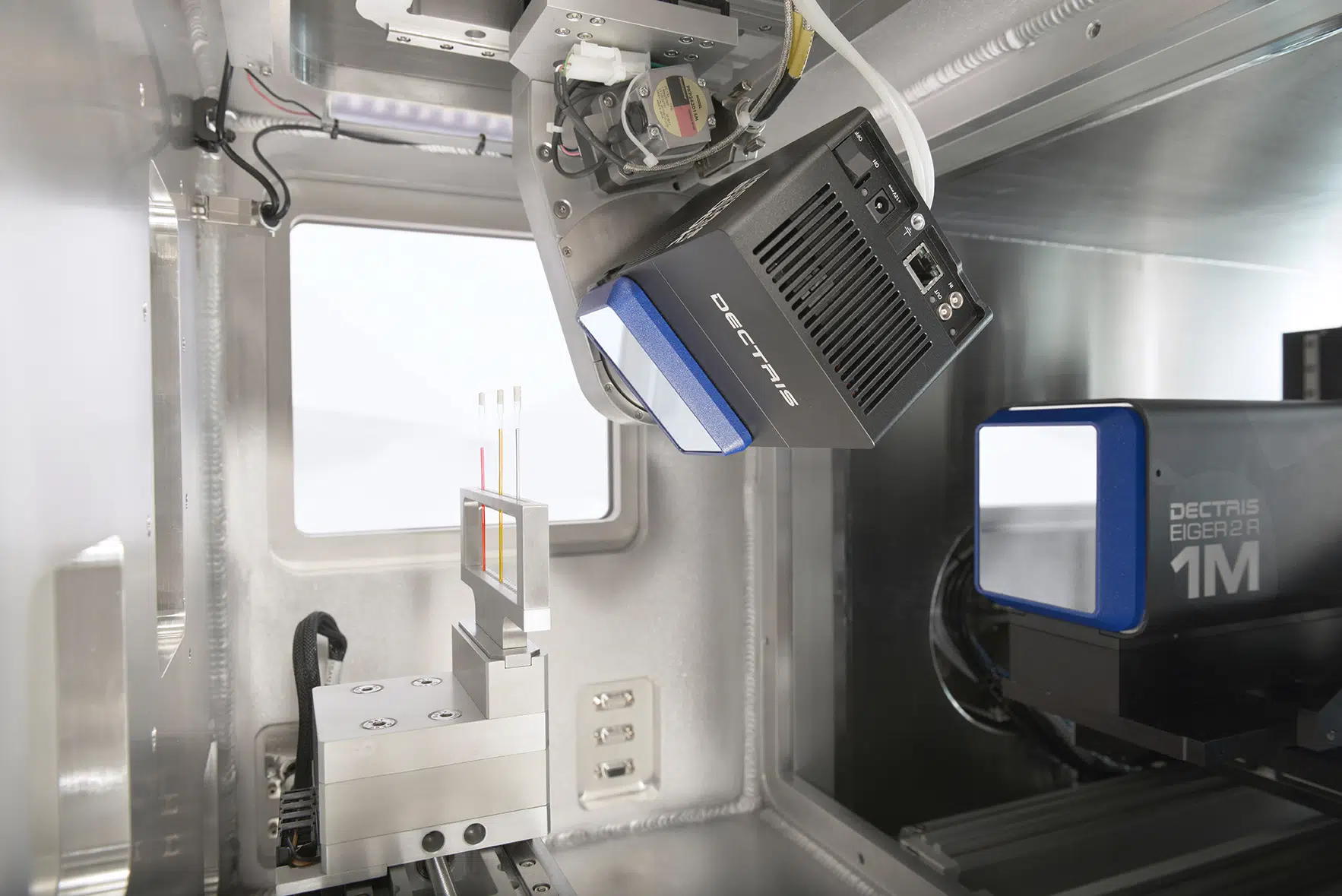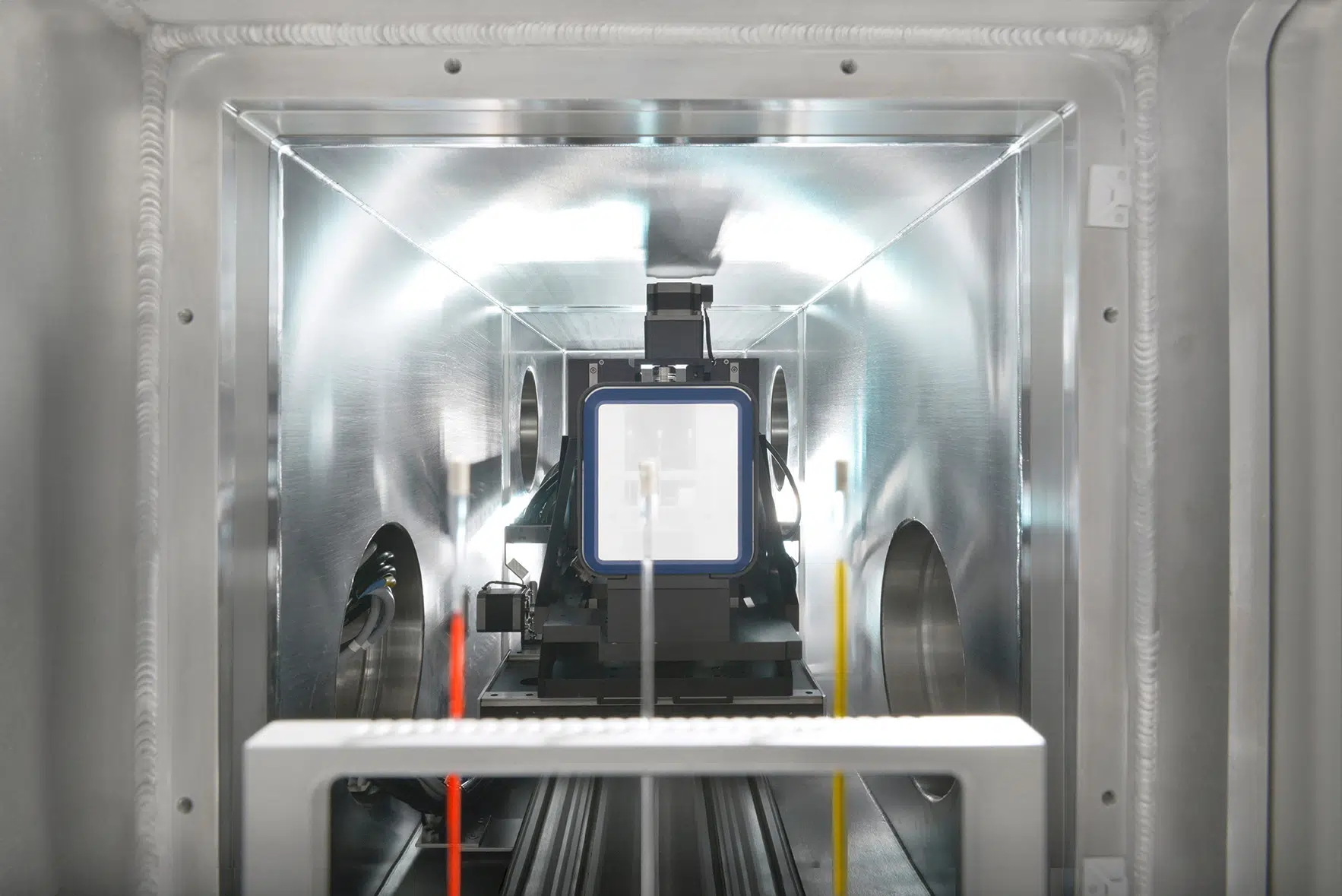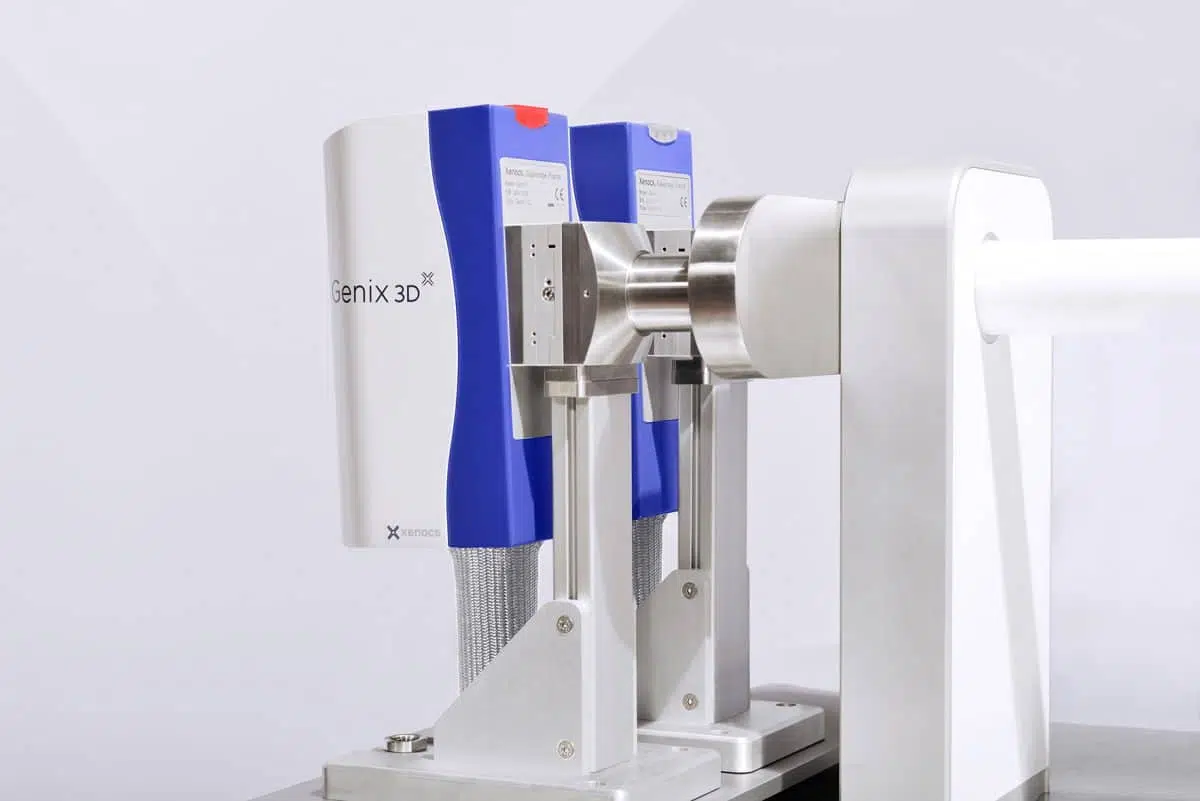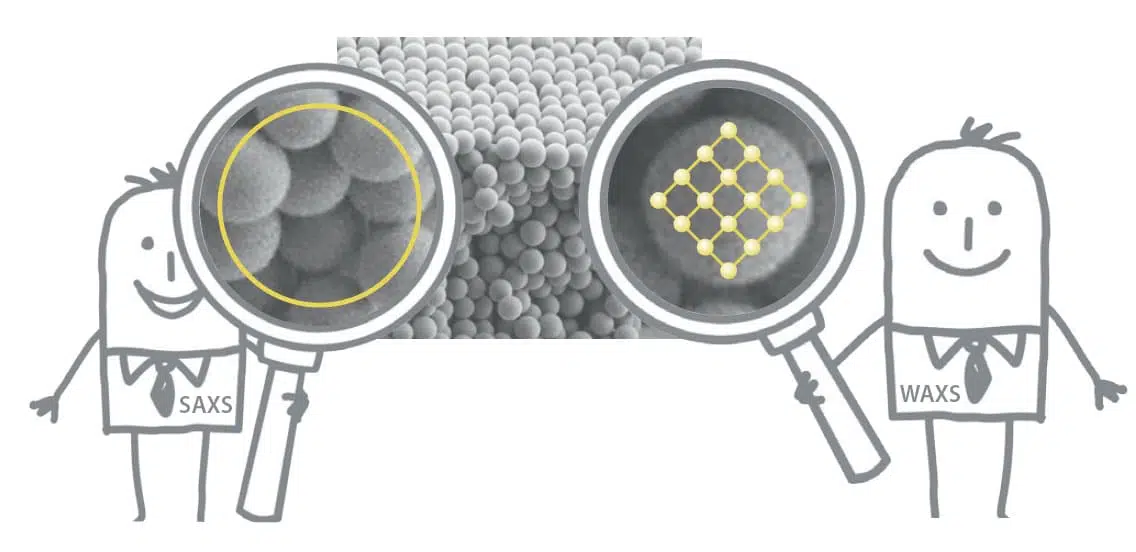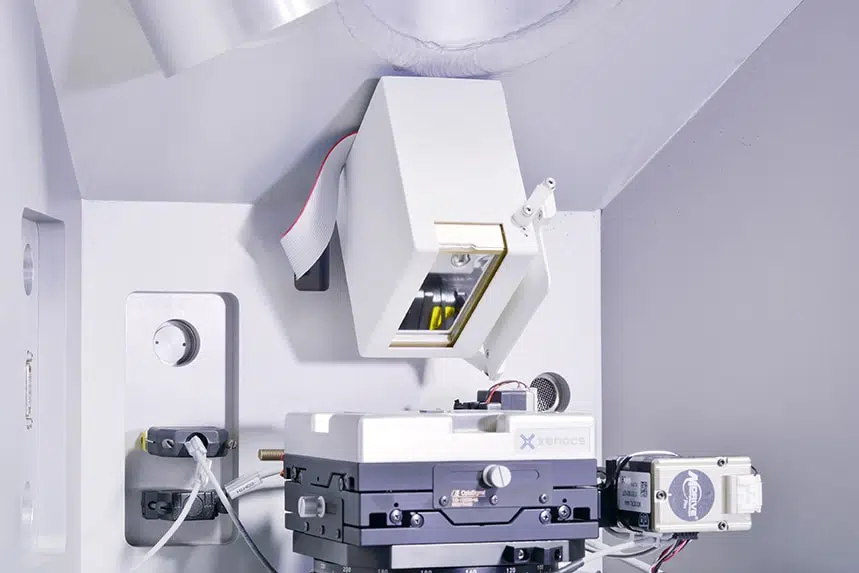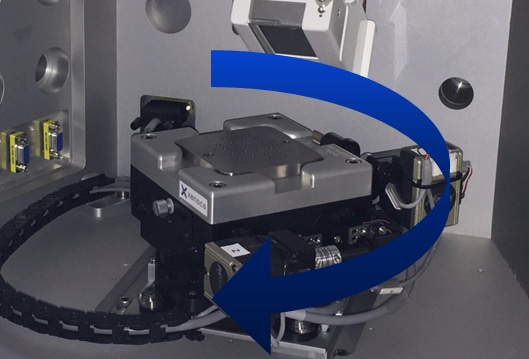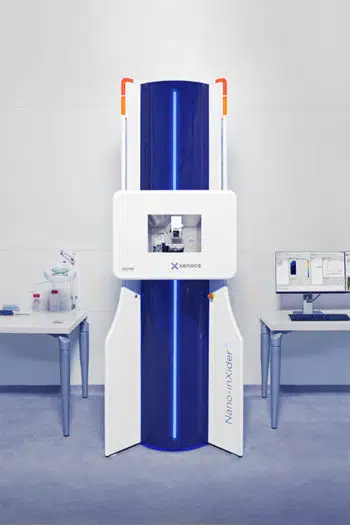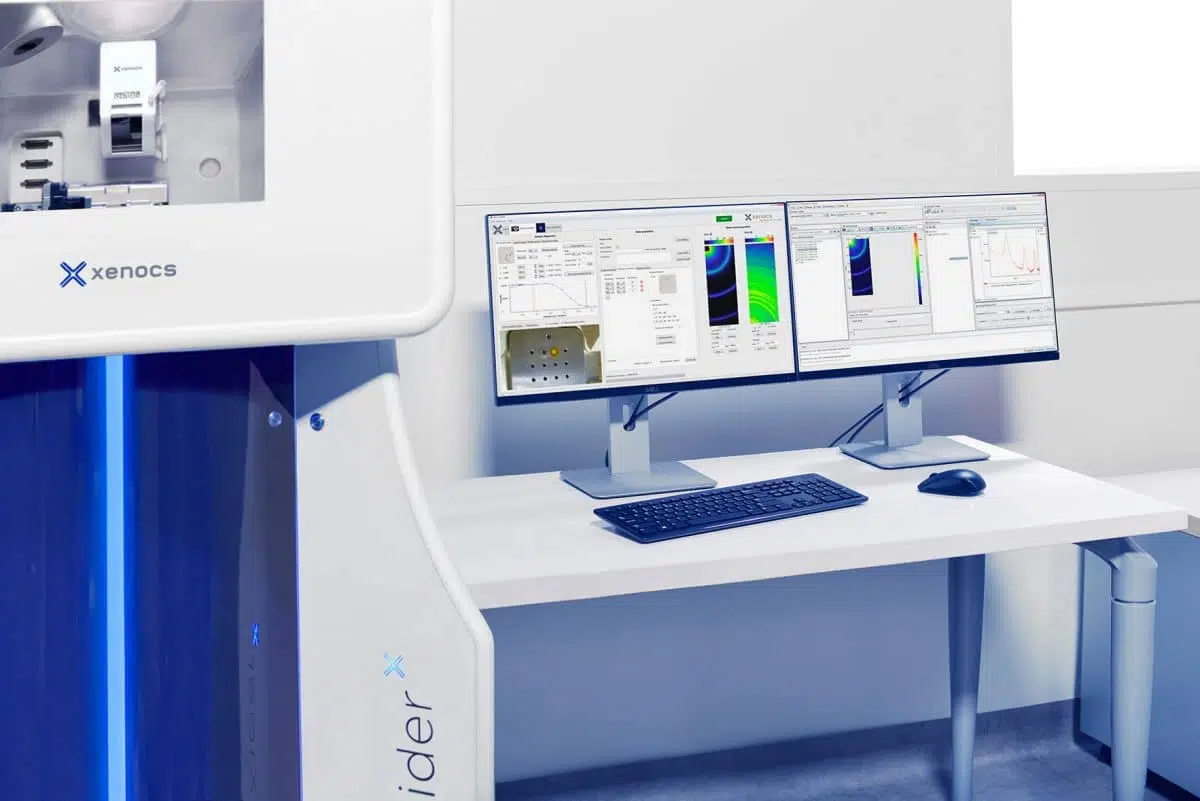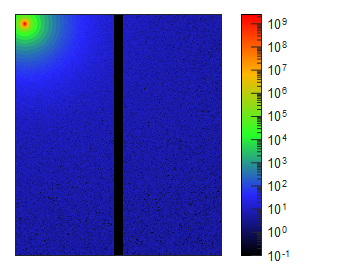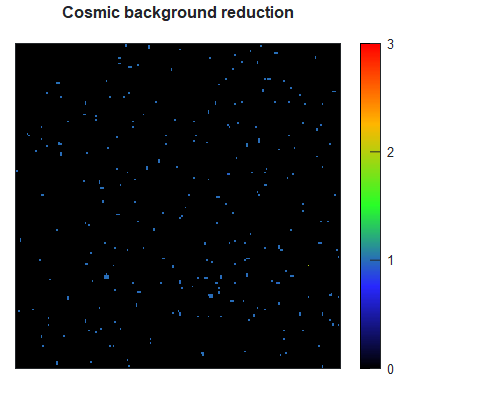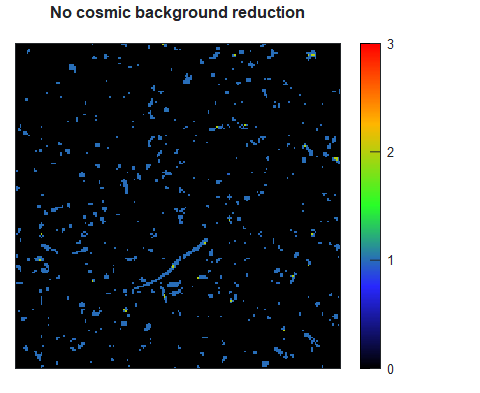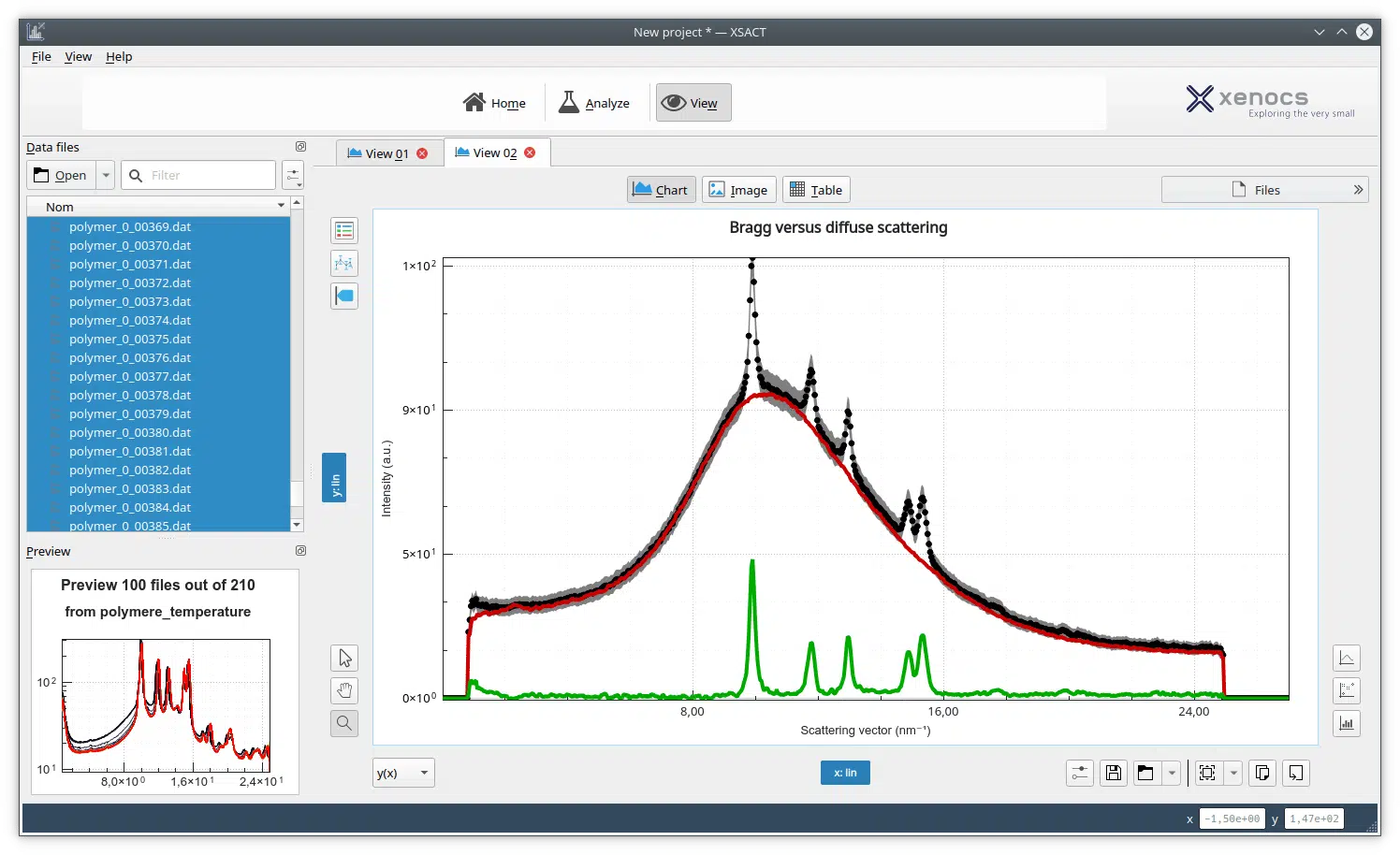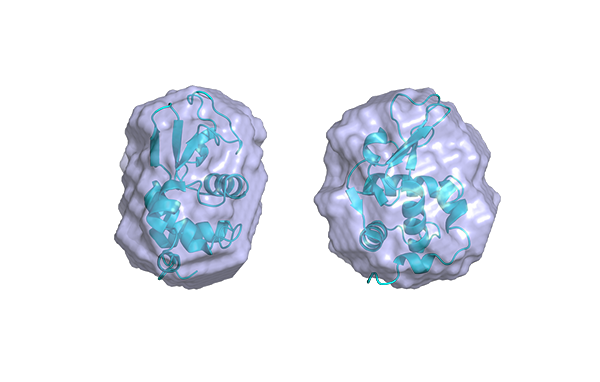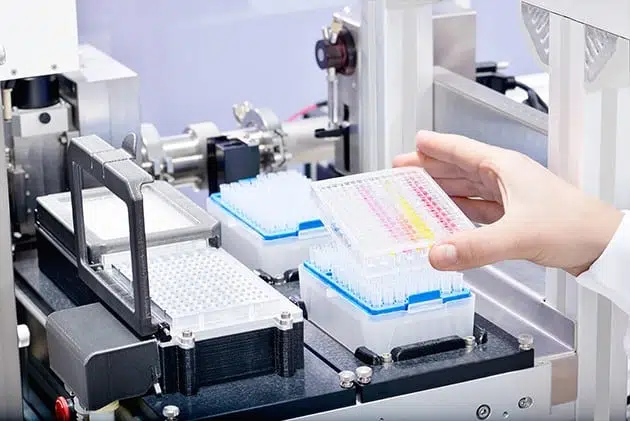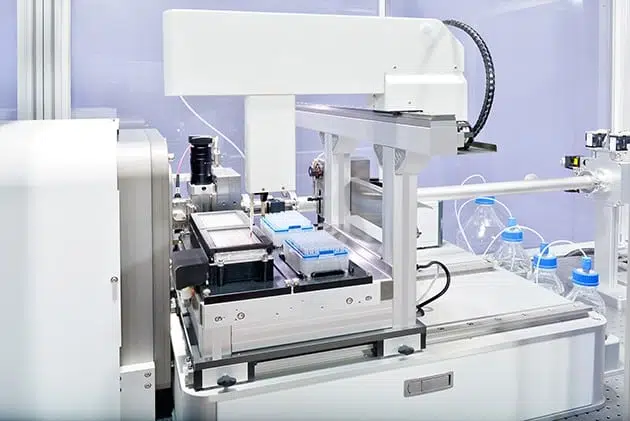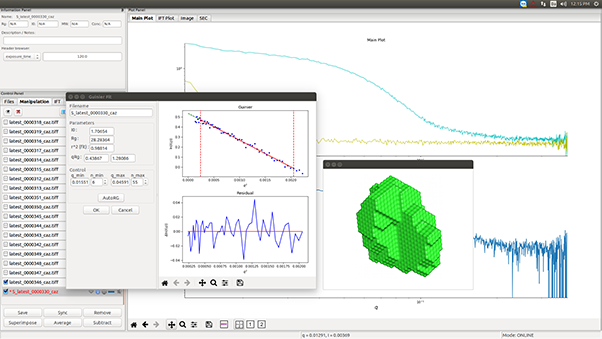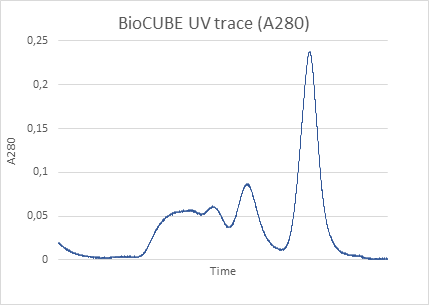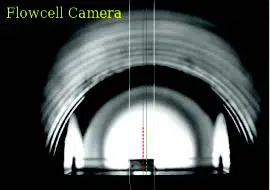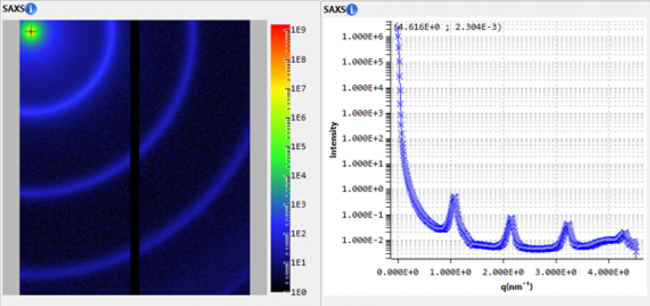In situ SAXS study of non-fat milk model systems during heat treatment and acidification
Food Research International, 2022, vol 157 DOI:10.1016/j.foodres.2022.111292 Abstract Small-angle X-ray scattering (SAXS) was used to monitor structural changes induced by heat treatment and acid gelation in milk matrices with added whey protein concentrates (WPCs) and nano-particulated whey protein (NWP). In general, heat treatment was found to mainly affect whey protein…
Effects of Hairy Nanoparticles on Polymer Crystallization Kinetics
Jimenez, Andrew M.; Krauskopf, Alejandro A.; Pérez-Camargo, Ricardo A.; Zhao, Dan; Pribyl, Julia; Jestin, Jacques; Benicewicz, Brian C.; Müller, Alejandro J.; Kumar, Sanat K.
We previously showed that nanoparticles (NPs) could be ordered into structures by using the growth rate of polymer crystals as the control variable. In particular, for slow enough spherulitic growth fronts, the NPs grafted with amorphous polymer chains are selectively moved into the interlamellar, interfibrillar, and interspherulitic zones of a…
Active site isolation in bismuth-poisoned Pd/SiO2 catalysts for selective hydrogenation of furfural
Cherkasov, Nikolay; Expósito, Antonio José; Aw, Moom Sinn; Fernández-García, Javier; Huband, Steven; Sloan, Jeremy; Paniwnyk, Larysa; Rebrov, Evgeny V.
Active site isolation in furfural (FA) hydrogenation was studied by poisoning a Pd catalyst with bismuth. A solution of FA in water was hydrogenated over a 5?wt% Pd/SiO2 catalyst in a batch reactor at various reaction temperatures and pressures. Furfuryl alcohol (FAL) was an intermediate product which was further hydrogenated…
Exploiting In-Situ NMR to Monitor the Formation of a Metal-Organic Framework
Jones, Corey; Hughes, Colan; Yeung, Hamish; Paul, Alison; Harris, Kenneth D. M.; Easun, Timothy
The formation processes of metal-organic frameworks are increasingly widely researched using in-situ techniques, although there remains a scarcity of NMR studies in the field. In this work, the synthesis of MFM-500(Ni) has been investigated using the Combined Liquid- And Solid-State In?situ Crystallization NMR strategy, which provides information on the time-evolution…
TiO2-carbon nanoporous composites prepared via ZnO nanoparticle-templated carbonization of glucose adsorb and photodegrade organic pollutants in water
Barrera, Luis A.; Escobosa, Alma C.; Nevarez, Aileen; Dominguez, Noemi; Bañuelos, Jose L.; Westerhoff, Paul; Noveron, Juan C.
We report the ZnO nanoparticle-templated formation of nanoporous carbon (NTC) embedded with TiO2 nanoparticles for the adsorption and photodegradation of organic pollutants in water. Small-angle X-ray scattering (SAXS) studies indicate that NTC and NTC-TiO2 exhibit two types of porosities with average pore diameters of 2.8 and 11.5?nm, while Brunauer-Emmet-Teller (BET)…
Scalable synthesis of dispersible iron carbide (Fe3C) nanoparticles by nanocasting
Fletcher, D. C.; Hunter, R.; Xia, W.; Smales, G. J.; Pauw, B. R.; Blackburn, E.; Kulak, A.; Xin, Huolin; Schnepp, Z.
Metal carbides have shown great promise in a wide range of applications due to their unique catalytic, electrocatalytic and magnetic properties. However, the scalable production of dispersible metal carbide nanoparticles remains a challenge. Here, we report a simple and scalable route to dispersible iron carbide (Fe3C) nanoparticles. This uses MgO…
Single-step preparation of mono-dispersed sulfur nanoparticles for detention of copper
Shevchenko, Natalia; Steinhart, Milos; Tomík, Elena
Application of sulfur nanoparticles results from biocompatibility, biodegradability, and non-toxicity of the shell that covers sulfur nanoparticles. However, to prepare uniform sulfur nanoparticles still remains a challenge; particularly in aqueous medium when the size of sulfur nanoparticles is not more than 20 nm. In the current work, the detailed investigation…
Rapid synthesis of [Au25(Cys)18] nanoclusters via carbon monoxide in microfluidic liquid-liquid segmented flow system and their antimicrobial performance
Huang, He; Hwang, Gi Byoung; Wu, Gaowei; Karu, Kersti; Du Toit, Hendrik; Wu, Han; Callison, June; Parkin, Ivan P.; Gavriilidis, Asterios
Atomically precise thiolate-gold nanoclusters with well-defined structures attract attention for use in various applications. However, most of the recently reported synthetic methods rely on prolonged synthesis times (a few hours to days) in order to produce high purity materials with a single cluster size. Such extended synthesis times make these…
Two Growth Mechanisms of Thiol-Capped Gold Nanoparticles Controlled by Ligand Chemistry
Chen, Xuelian; Wei, Meng; Jiang, Shaohua; Förster, Stephan
Thiols play an important role in the synthesis of well-defined nanoparticles (NPs) with tailored properties, but their effects on the formation kinetics of NPs are still under investigation. Here, we used in situ small-angle X-ray scattering (SAXS)/UVvis spectroscopy and time-dependent transmission electron microscopy (TEM) to elucidate the role of thiols…
A Cross-Method Comparison of Sub-10 nm Nanoparticle Size Distribution
Yang, Ye; Liao, Suiyang; Luo, Zhi; Qi, Runzhang; Mac Fhionnlaoich, Niamh; Stellacci, Francesco; Guldin, Stefan
Accurate nanoparticle (NP) size determination is essential across research domains, with many functions in nanoscience and biomedical research being size-dependent. Although transmission electron microscopy (TEM) is capable of resolving a single NP down to the sub-nm scale, the reliable representation of entire populations is plagued by challenges in providing statistical…






